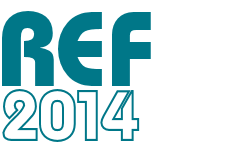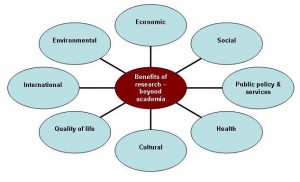 This week is REF Week on the Blog! Each day we will be explaining a different element of the Research Excellence Framework (REF) as a quick reference guide to help you prepare for the forthcoming REF exercise – REF2014.
This week is REF Week on the Blog! Each day we will be explaining a different element of the Research Excellence Framework (REF) as a quick reference guide to help you prepare for the forthcoming REF exercise – REF2014.
What were the HEFCE REF pilots? – HEFCE ran two pilot exercises with HEIs in the sector during the development of the REF. The first exercise was a bibliometrics pilot, and the second was an impact pilot.
 Bibliometrics pilot – HEFCE ran a pilot exercise in the construction of bibliometric indicators of research quality in 2008-09, using Scopus and the Web of Scienceas the test databases. BU was chosen as one of 22 institutions to be part of phase one of the pilot exercise. This involved the provision of publication details to HEFCE, and cross-checking BU information on Web of Science and Scopus. Where possible this was completed using BU’s institutional repository, BURO. The outcome of the bibliometrics pilot was that bibliometric indicators are not yet sufficiently robust enough in all disciplines to be used formulaically or as a primary indicator of research quality. However HEFCE agreed that there was scope for bibliometrics to inform the process of expert review in some units of assessment. These findings resulted in the decision that some UOA sub-panels will receive citation data (the number of times an output has been cited, calculate via Scopus) as additional information about the academic significance of the outputs.
Bibliometrics pilot – HEFCE ran a pilot exercise in the construction of bibliometric indicators of research quality in 2008-09, using Scopus and the Web of Scienceas the test databases. BU was chosen as one of 22 institutions to be part of phase one of the pilot exercise. This involved the provision of publication details to HEFCE, and cross-checking BU information on Web of Science and Scopus. Where possible this was completed using BU’s institutional repository, BURO. The outcome of the bibliometrics pilot was that bibliometric indicators are not yet sufficiently robust enough in all disciplines to be used formulaically or as a primary indicator of research quality. However HEFCE agreed that there was scope for bibliometrics to inform the process of expert review in some units of assessment. These findings resulted in the decision that some UOA sub-panels will receive citation data (the number of times an output has been cited, calculate via Scopus) as additional information about the academic significance of the outputs.
Impact pilot – During 2009-10, HEFCE ran a second pilot exercise, this time with the aim of developing proposals for how to assess research impact in the REF. The impact pilot involved 29 HEIs submitting evidence of impact (case studies and statements) which were assessed by pilot expert panels in five units of assessment:
- Clinical Medicine
- Physics
- Earth Systems and Environmental Sciences
- Social Work and Social Policy & Administration
- English Language and Literature
The impact pilot completed in autumn 2010 and the final report (including recommendations and findings) was published on 11 November 2010. The full report can be accessed on the HEFCE website. For a brief summary of the report, please download the Impact Pilot Summary. You can also read our REF Impact FAQs.
You can access the latest presentation about the REF, written by the REF team, here: REF slide pack Sep 2011
Check out the posts appearing on the Blog every day this week as part of REF Week!
 Why do I need to think about the impact of my research?
Why do I need to think about the impact of my research?

 I am delighted to share with you the news that BU’s
I am delighted to share with you the news that BU’s 



 HEFCE
HEFCE


















 On Christmas Day in the Morning…
On Christmas Day in the Morning… New Nepal scoping review on maternal & neonatal health
New Nepal scoping review on maternal & neonatal health Fourth INRC Symposium: From Clinical Applications to Neuro-Inspired Computation
Fourth INRC Symposium: From Clinical Applications to Neuro-Inspired Computation Writing policy briefs
Writing policy briefs ECR Funding Open Call: Research Culture & Community Grant – Application Deadline Friday 12 December
ECR Funding Open Call: Research Culture & Community Grant – Application Deadline Friday 12 December MSCA Postdoctoral Fellowships 2025 Call
MSCA Postdoctoral Fellowships 2025 Call ERC Advanced Grant 2025 Webinar
ERC Advanced Grant 2025 Webinar Horizon Europe Work Programme 2025 Published
Horizon Europe Work Programme 2025 Published Horizon Europe 2025 Work Programme pre-Published
Horizon Europe 2025 Work Programme pre-Published Update on UKRO services
Update on UKRO services European research project exploring use of ‘virtual twins’ to better manage metabolic associated fatty liver disease
European research project exploring use of ‘virtual twins’ to better manage metabolic associated fatty liver disease